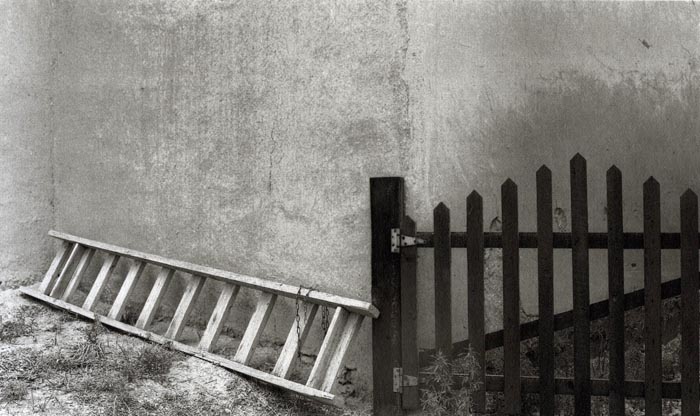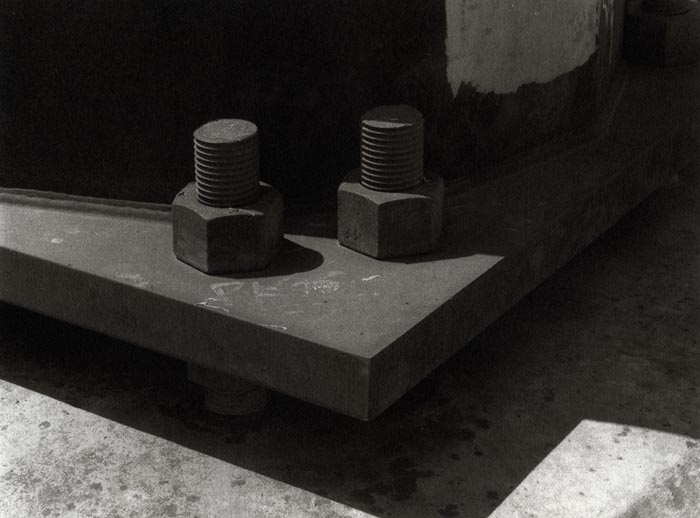|
Philip Schwartz
Philip is a self-taught carbon printer from San Francisco. He prints with the single transfer method and uses watercolor papers as the final support. His printing method produces prints that are low in relief but exhibit other
characteristics of the carbon process, including long tonal range and sharpness. Phil uses a 5x7” camera for image capture but then scans the negatives and produces digital negatives for contact printing. His working
procedures are as follow.
- Film is scanned and digital negatives are created in Photoshop and printed on an Epson R1800 using Pictorico OHP.
- Negatives are contacted printed onto homemade tissue.
- The tissue is brush sensitized with a solution of 4-5% ammonium dichromate diluted 1+1 with 99% isopropyl alcohol.
- The tissue is hung to dry in the dark for about an hour.
- The negative is masked with ruby type tape, sandwiched with the tissue in a contact print frame, and exposed using a bank of eight 18" BL tubes. A typical exposure is 7-8 minutes.
- Once exposed the tissue is soaked with the final support in cool water for 1 minute, the two are squeegeed together, then set aside under a piece of Plexiglas.
- After 20-30 minutes the tissue and support sandwich are developed in water at 105-110° F. The tissue is peeled off the support when it releases easily (a couple of minutes) and development continues. When the image no
longer bleeds pigment it is put briefly into cool water to set the gelatin, then hung to dry.
Phil uses RC paper or Yupo (synthetic paper) for proofing. Fabriano Artistico, which has been previously sized with gelatin and glyoxal or formalin, is used for final prints. After drying, prints on watercolor paper are
cleared in potassium metabisulfite, and then given a final wash in fresh water.
Figure 7 – Philip Schwartz, “Trampas” 5X7” single transfer carbon print on watercolor paper.
Figure 8 – Philip Schwartz, “Bolts,” 5X7 single transfer carbon print on watercolor paper. |


